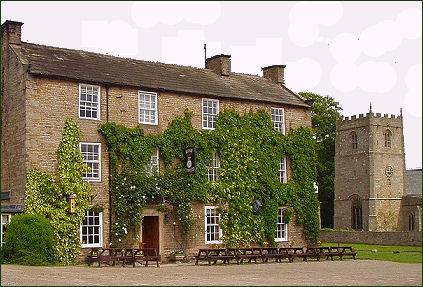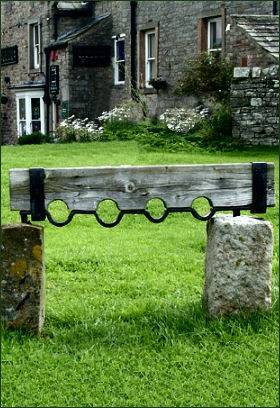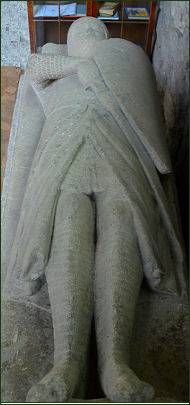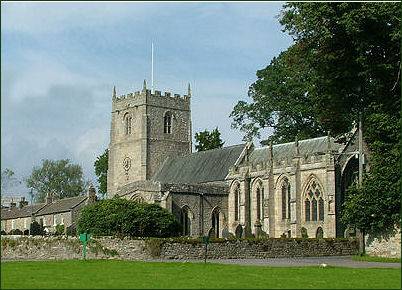Romaldkirk
OS grid reference:- NY 995 221

 The highly attractive Teesdale village of Romaldkirk is situated 6 miles to the north west of the market town of Barnard Castle and lies in beautiful Teesdale within the historic boundaries of the North Riding of Yorkshire.
The highly attractive Teesdale village of Romaldkirk is situated 6 miles to the north west of the market town of Barnard Castle and lies in beautiful Teesdale within the historic boundaries of the North Riding of Yorkshire.
The village is thought to derive its name from St. Rumwald of Brackley, an obscure Anglo-Saxon saint who was born in King's Sutton, Northamptonshire, probably in 650 AD. St. Rumwald was said to be the maternal grandson of King Penda of Mercia, and the son of a Pagan prince of Northumbria. Rumwold's mother is described as a pious Christian who, when married to a pagan king, tells him that she will not consummate the marriage until he converts to Christianity, he does so, and she becomes pregnant. An eleventh century legend relates that the three-day-old prince pronounced the Christian Creed loudly immediately after his baptism!
Of ancient origin, the village is referred to in the Domesday Book of 1086 as ' Romoldscherce' where it is recorded as 'waste'. Upper Teesdale was laid waste by the Scots in 1070, when an 'infinite multitude' led by King Malcolm Canmore entered Cumberland and crossed the Pennines into Yorkshire, after laying waste the area, Canmore tnen marched north, loaded with loot, to Wearmouth.
Romaldkirk is one of the most attractive villages in County Durham. The Rose & Crown Inn (above left) dates back to the eighteenth century and stands on the green of the picture postcard village. The inn offers bed and breakfast accommodation and serves delicious food. A set of ancient stocks (above left) stands on the the village green outside the inn.
Most of the houses around the pretty village green were built during the 1700's. By the side of the road opposite to the church is a house, formerly an inn, with the inscription:-'If by you go And dry you be The fault's in you And not in me.'
St. Rumold's Church
 St Rumold's church, a Grade 1 listed building, known as the "Cathedral of the Dale", occupies a commanding position, overlooking the large village green, it occupies the site of an earlier Saxon church, which was probably destroyed during a Scottish raid by Malcolm Canmore, King of Scots. Rebuilding of the church commenced in around 1155.
St Rumold's church, a Grade 1 listed building, known as the "Cathedral of the Dale", occupies a commanding position, overlooking the large village green, it occupies the site of an earlier Saxon church, which was probably destroyed during a Scottish raid by Malcolm Canmore, King of Scots. Rebuilding of the church commenced in around 1155.
 The large building contains surviving sections of Anglo-Saxon walls either side of the chancel arch, as well as a late medieval rood stair. The church comprises a long chancel with a north vestry and organ chamber, a short aisled nave with transepts and a south porch, and a diagonally-buttressed west tower which was added in the fifteenth century..
The large building contains surviving sections of Anglo-Saxon walls either side of the chancel arch, as well as a late medieval rood stair. The church comprises a long chancel with a north vestry and organ chamber, a short aisled nave with transepts and a south porch, and a diagonally-buttressed west tower which was added in the fifteenth century..
The superb rumcubent stone effigy of Hugh Fitz Henry, Lord of Bedale, Ravensworth and Cotherstone, is also to be seen in the church (left). He wears a long surcoat reaching below the knee and an ornamental sword-belt. He draws his sword and carries a large shield on which the arms of Fitz Henry appear. The effigy is in a rare straight legged position as opposed to the usual crosslegged position and lies on chest tomb in north transept. Hugh Fitz Henry died 1305 of wounds incurred whilst on campaign in Scotland with King Edward I.
A twelfth century font stands at west end of south aisle, which has a circular bowl with 3 tiers of horseshoe-shaped leaf decoration. Beneath the West window are the remains of a three-decker pulpit which was made in 1728 and dismantled in 1927. The present pulpit constituted the upper tier of this structure.
During a restoration in 1927 the box pews were replaced with new pews made by Robert Thompson 'the Mouseman of Kilburn', which bear the trademark carved mouse. The carved reredos behind the altar is also the work of Robert Thompson.
